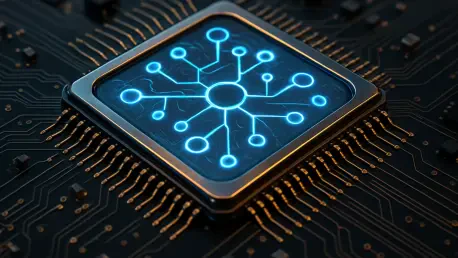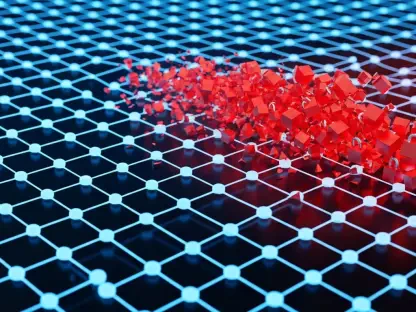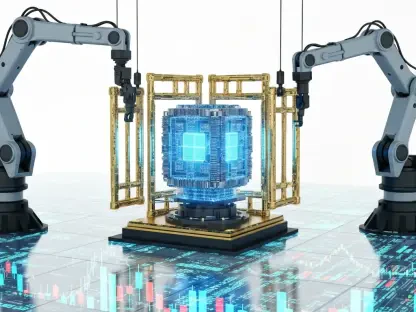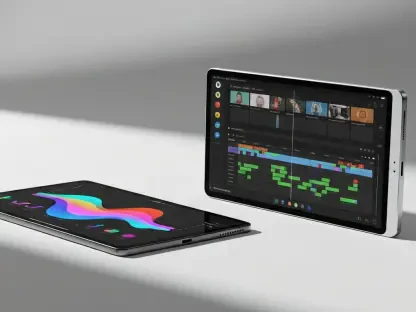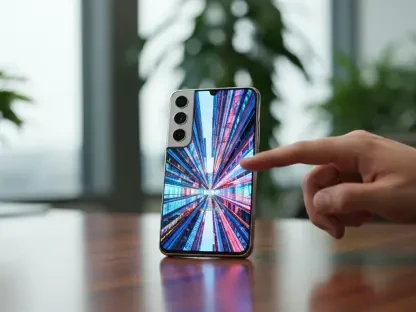Neuromorphic semiconductors stand on the cutting edge of technology, offering remarkable potential to transform robotics with their groundbreaking approach to replicating human-like sensory response systems. As industries increasingly pursue efficiency and intelligence in robotic systems, the breakthrough achieved by Korean researchers presents an enticing prospect. This technology merges principles from neuroscience with semiconductor systems, promising advancements that could redefine robotics, enhance artificial intelligence, and set new benchmarks for energy efficiency and computational effectiveness.
Pioneering Features of Neuromorphic Semiconductors
At the core of neuromorphic semiconductors are memristors, advanced devices that mimic synaptic activity in the human brain by storing data through changes in resistance. Unlike previous iterations that could only handle monotonic conductivity changes, recent innovations have equipped memristors to imitate complex neural dynamics such as habituation and sensitization. This enables them to alter responses to stimuli in a manner akin to living organisms, creating more adaptable and responsive robotic systems.
Simultaneously, neuromorphic algorithms translate these biological processes into functional code, providing robotic systems the computational framework needed to process sensory information dynamically. These algorithms form the backbone of systems that can learn from, adapt to, and interact with their environment, without relying on cumbersome software or extensive circuit networks. The combination of these components within neuromorphic semiconductors marks a significant leap toward producing robots that exhibit cognitive features once thought exclusive to biological entities.
Latest Achievements and Progress
There has been considerable progress within the field, particularly the artificial sensory nervous system pioneered by institutions such as the Korea Advanced Institute of Science and Technology and Chungnam National University. This system simulates human-like sensory responses using next-generation semiconductors, pushing the boundaries of how robots perceive and react to stimuli. This achievement has led to the development of robotic systems with advanced capabilities, notably manifesting in robotic prosthetics and ultra-small robotic applications where precision and efficiency are paramount.
The ability to mimic human sensory dynamics without relying on auxiliary software systems presents new opportunities for robotics across various domains. By harnessing the capability to detect and prioritize environmental stimuli, robots can operate autonomously and efficiently, reducing energy footprints while enhancing response accuracy.
Practical Implications and Applications
Expanding beyond laboratory environments, neuromorphic semiconductors have found practical applications in diverse sectors. Key deployments include advancements in robotic prosthetics, where enhanced sensory feedback mechanisms are critical for user experiences that more closely mimic natural human movement and sensation. Military and industrial applications also benefit from such technology, allowing for efficient, compact robotic solutions that maintain high levels of operational efficiency and reliability.
Notably, this technology exhibits the potential to revolutionize the design and function of ultra-small robots—an area where weight, space, and energy constraints are often challenging. By integrating a neuromorphic approach, researchers have crafted solutions that not only meet but exceed current expectations, offering a pathway to smarter, more autonomous robotic systems.
Obstacles and Development Barriers
Despite its promise, neuromorphic technology still encounters various challenges. Among these are the hurdles concerning the scalability and integration of memristor-based systems within existing hardware. Regulatory concerns regarding data handling and technological standardization further compound these issues, presenting barriers to widespread adoption. Addressing these challenges requires ongoing research and collaboration across disciplines to refine integration approaches and establish robust frameworks that accommodate the technology’s unique characteristics.
Efforts to overcome these obstacles focus on refining the algorithms and enhancing the material properties of memristors to promote more straightforward manufacturing processes, thereby facilitating broader use across industries.
Looking Ahead: Long-Term Prospects
The future of neuromorphic semiconductors is poised for continual innovation and integration into everyday applications. As research progresses, it’s anticipated that this technology will bridge the gap between human intelligence and machine processing, ushering in a new era where machines operate with autonomy that closely mirrors human cognitive processes.
Potential breakthroughs lie in further reducing energy consumption while enhancing computational power—advancements that could redefine interactions between humans and robots. These improvements promise not only to optimize current applications but to pave the way for unforeseen innovations, transforming how society perceives and utilizes robotics technology in daily life and industry settings.
Concluding Remarks
In conclusion, neuromorphic semiconductors have notably advanced the capabilities of robotics. By replicating the intricate dynamics of human sensory responses in a compact, efficient manner, they have already transformed the landscape of robotic design. As this technology continues to mature, its impact on industries and society promises to be both profound and enduring, not only delivering efficiency and computational parity with traditional systems but charting a new course for the integration of intelligence within machines. With ongoing development, neuromorphic solutions could hold the key to smarter, more adaptive, and seamlessly integrated technologies across numerous applications, fulfilling roles previously reserved for their human counterparts.
